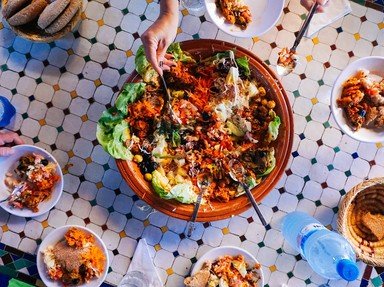Quiz Answer Key and Fun Facts
1. Which of the following is the main agent (along with enzymes) in the decay of food?
2. Bacteria are one form of microbe or microorganism. Which of these foods primarily uses bacteria to help make the food and, in the process, preserve the main ingredients?
3. Making yoghurt is a way of preserving milk. Bacteria are used to produce lactic acid from milk sugars. What is the process called?
4. An early form of food preservation is curing, which uses dry edible salt. What is the mechanism?
5. Health concerns about nitrite-cured meats has led to some products being labelled "no nitrites added". Given nitrites crucial preserving role (typically enforced by food regulations), celery juice may be used to provide a 'natural' alternative.
6. Jellying is another preservation technique. Which animal was prepared this way in the East End of London?
7. There are examples of perpetual stew lasting decades. What preservation technique is involved?
8. Century eggs, a Chinese preserved food, are made traditionally using clay, quick lime, wood ash and salt. What preserves the eggs?
9. Burial is another preserving technique. What food can be buried unchanged in a storage clamp for a few months until required?
10. What kind of fish is used to make kippers?
Source: Author
suomy
This quiz was reviewed by FunTrivia editor
Bruyere before going online.
Any errors found in FunTrivia content are routinely corrected through our feedback system.
